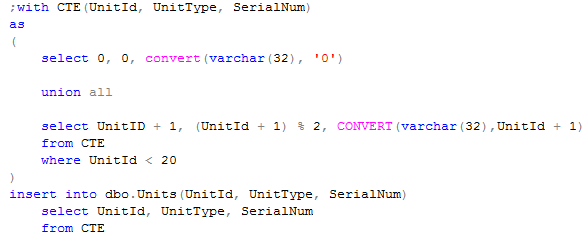Last Sunday I wrote about cross joins. Today I want to show another example where cross joins could be useful.
Assuming you have 2 tables in the database. One is Units. Another 1 is UnitType1Settings which contains set of the settings for units with UnitType=1. See below:

As the disclaimer, this design is far from optimal. Please don’t use it in your system. Even if I’m using it only as the example, I saw similar approaches in real production systems.
In any case, there were about 20 settings per unit, so developers implemented the trigger like below:

Obviously this is not the best implementation. Cursor, 20 separate inserts. Not even talking about the triggers in general.
Let’s test it with the insert statement which inserts 20 units and 10 of them are UnitType=1

Original trigger produces 30 (and in real life 200) separate inserts with plan like that:

So how can you optimize that (assuming you want to keep trigger in place). So first step is get rid of the cursor and do something like:

If you look at the plan, you can see:

Better, but still requires multiple (20 scans) of the inserted table. And this is where cross join can help:

This implementation basically builds rowset with 3 (20) settings and next simply do the Cartesian product with all units with UnitType = 1

As you can see in this plan it uses only 1 scan which is much more efficient than previous implementations